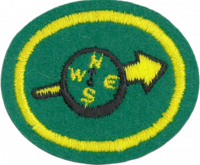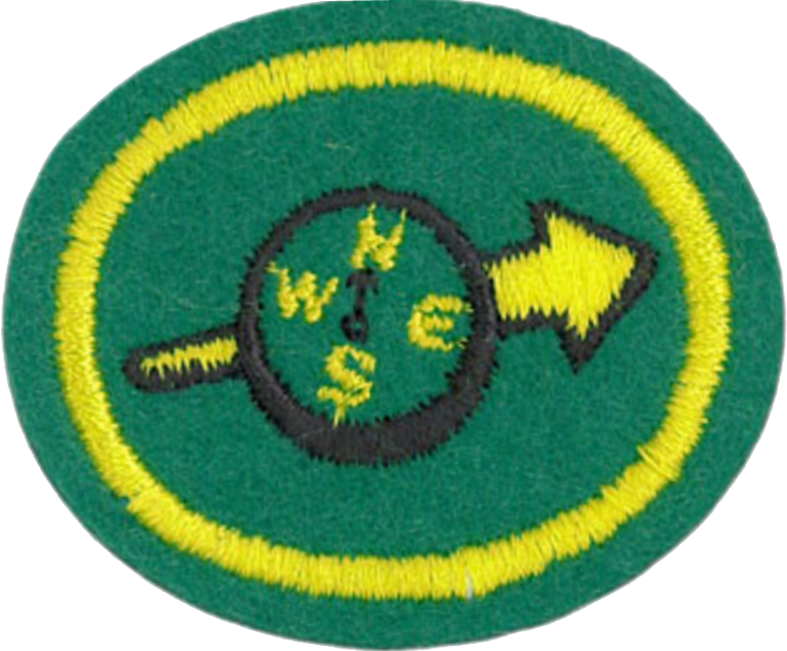Difference between revisions of "AY Honors/Orienteering/Answer Key/es"
(Created page with "</noinclude> ==Referencias== <noinclude>") |
|||
| (11 intermediate revisions by the same user not shown) | |||
| Line 1: | Line 1: | ||
| − | + | {{HonorSubpage}} | |
<noinclude></noinclude> | <noinclude></noinclude> | ||
| − | + | {{Division variant/es|division=División Sudamericana}} | |
| − | |||
| − | |||
| − | |||
| − | |||
| − | |||
| − | |||
| − | |||
| − | |||
| − | |||
| − | {{Division variant | ||
| − | |||
| − | |||
| − | |||
| − | |||
| − | |||
| − | |||
| − | |||
| − | |||
| − | |||
<noinclude></noinclude> | <noinclude></noinclude> | ||
<section begin="Body" /> | <section begin="Body" /> | ||
| Line 35: | Line 16: | ||
{{ansreq|page={{#titleparts:{{PAGENAME}}|2|1}}|num=2}} | {{ansreq|page={{#titleparts:{{PAGENAME}}|2|1}}|num=2}} | ||
<noinclude></noinclude> | <noinclude></noinclude> | ||
| − | <!-- 2. | + | <!-- 2. Identificar al menos 20 signos y símbolos utilizados en los mapas topográficos. --> |
| − | |||
| − | |||
| − | |||
| − | |||
| − | |||
| − | |||
| − | |||
| − | |||
| − | |||
| − | |||
| − | |||
| − | |||
| − | |||
| − | |||
| − | |||
| − | |||
| − | |||
| − | |||
| − | |||
| − | |||
| − | |||
| − | |||
| − | |||
| − | |||
| − | |||
| − | |||
| − | |||
| − | |||
| − | |||
| − | |||
| − | |||
| − | |||
| − | |||
| − | |||
| − | |||
<noinclude></noinclude> | <noinclude></noinclude> | ||
| Line 76: | Line 22: | ||
{{ansreq|page={{#titleparts:{{PAGENAME}}|2|1}}|num=3}} | {{ansreq|page={{#titleparts:{{PAGENAME}}|2|1}}|num=3}} | ||
<noinclude></noinclude> | <noinclude></noinclude> | ||
| − | <!-- 3. | + | <!-- 3. Dar la nomenclatura de una brújula de orientación. --> |
| − | |||
| − | |||
| − | |||
{{clear}} | {{clear}} | ||
| Line 91: | Line 34: | ||
{{ansreq|page={{#titleparts:{{PAGENAME}}|2|1}}|num=4}} | {{ansreq|page={{#titleparts:{{PAGENAME}}|2|1}}|num=4}} | ||
<noinclude></noinclude> | <noinclude></noinclude> | ||
| − | <!-- 4. | + | <!-- 4. Conocer el significado de los siguientes términos: --> |
<noinclude></noinclude> | <noinclude></noinclude> | ||
{{ansreq|page={{#titleparts:{{PAGENAME}}|2|1}}|num=4a}} | {{ansreq|page={{#titleparts:{{PAGENAME}}|2|1}}|num=4a}} | ||
| Line 131: | Line 74: | ||
{{ansreq|page={{#titleparts:{{PAGENAME}}|2|1}}|num=5}} | {{ansreq|page={{#titleparts:{{PAGENAME}}|2|1}}|num=5}} | ||
<noinclude></noinclude> | <noinclude></noinclude> | ||
| − | <!-- 5. | + | <!-- 5. Demostrar cómo encontrar el acimut magnético. --> |
{{clear}} | {{clear}} | ||
| Line 141: | Line 84: | ||
{{ansreq|page={{#titleparts:{{PAGENAME}}|2|1}}|num=6}} | {{ansreq|page={{#titleparts:{{PAGENAME}}|2|1}}|num=6}} | ||
<noinclude></noinclude> | <noinclude></noinclude> | ||
| − | <!-- | + | <!-- 6. Demostrar la manera de andar con un acimut magnético. --> |
| − | |||
| − | |||
{{clear}} | {{clear}} | ||
| Line 153: | Line 94: | ||
{{ansreq|page={{#titleparts:{{PAGENAME}}|2|1}}|num=7}} | {{ansreq|page={{#titleparts:{{PAGENAME}}|2|1}}|num=7}} | ||
<noinclude></noinclude> | <noinclude></noinclude> | ||
| − | <!-- 7. | + | <!-- 7. Conocer dos métodos para corregir la declinación. --> |
| − | |||
| − | |||
{{clear}} | {{clear}} | ||
| Line 217: | Line 156: | ||
{{ansreq|page={{#titleparts:{{PAGENAME}}|2|1}}|num=8}} | {{ansreq|page={{#titleparts:{{PAGENAME}}|2|1}}|num=8}} | ||
<noinclude></noinclude> | <noinclude></noinclude> | ||
| − | <!-- | + | <!-- 8. Ser capaz de orientarse por sí mismo y un mapa, por inspección y por una brújula. --> |
| − | |||
<noinclude></noinclude> | <noinclude></noinclude> | ||
| Line 224: | Line 162: | ||
{{ansreq|page={{#titleparts:{{PAGENAME}}|2|1}}|num=9}} | {{ansreq|page={{#titleparts:{{PAGENAME}}|2|1}}|num=9}} | ||
<noinclude></noinclude> | <noinclude></noinclude> | ||
| − | <!-- 9. | + | <!-- 9. Explicar la triangulación y su uso. --> |
| − | |||
<noinclude></noinclude> | <noinclude></noinclude> | ||
| Line 231: | Line 168: | ||
{{ansreq|page={{#titleparts:{{PAGENAME}}|2|1}}|num=10}} | {{ansreq|page={{#titleparts:{{PAGENAME}}|2|1}}|num=10}} | ||
<noinclude></noinclude> | <noinclude></noinclude> | ||
| − | <!-- 10. | + | <!-- 10. Demostrar su habilidad en el uso de un mapa y/o una brújula, siguiendo el curso de una milla (1.6 km) a campo traviesa con un mínimo de cinco puntos de lectura o puntos de control. --> |
| − | {{: | + | {{:AY Honors/Compass course/es}} |
<noinclude></noinclude> | <noinclude></noinclude> | ||
| Line 239: | Line 176: | ||
==Referencias== | ==Referencias== | ||
<noinclude></noinclude> | <noinclude></noinclude> | ||
| − | + | {{CloseHonorPage}} | |
Latest revision as of 16:01, 7 September 2021
1
2
3
4
4a
4b
4c
4d
4e
4f
4g
4h
4i
4j
4k
5
6
7
8
9
10
Como el instructor, usted será responsable de establecer un curso. Hay muchas maneras de hacer esto, pero una cosa que sí funciona bien es el uso de estacas para marcar los puntos de control. Cuando presente el curso, asegúrese de que no tiene nada magnético en su persona, ya que esto confunde las lecturas de las brújulas para todos. Si puede pasar a través de un detector de metales en un aeropuerto, debe estar bien. Tenga mucho cuidado al buscar sus acimuts y anótelas. Esto sería un mal momento para descubrir que su memoria no es tan buena como lo pensaba. Si está marcando los puntos de control, está bien estimar las distancias. Recuerde que para la mayoría de la gente dos pasos es igual a casi 1.5 metros. Por lo tanto, se puede hacer una estimación razonable de la distancia. Si tiene una dirección precisa, debe ser suficiente. También puede indicar el número de pasos en lugar de la distancia en metros. Sus instrucciones deben indicar que el Conquistador debe caminar una dirección particular por una distancia aproximada y buscar la estaca. Después, dispare el segundo acimut y repita, hasta que lleguen al punto de control final. Asegúrese que recoja las estacas en el camino de regreso.


